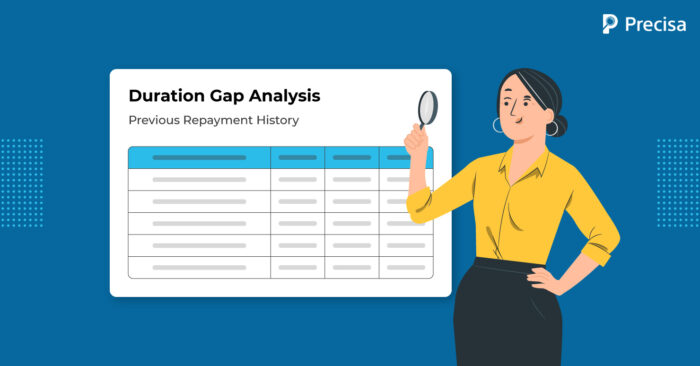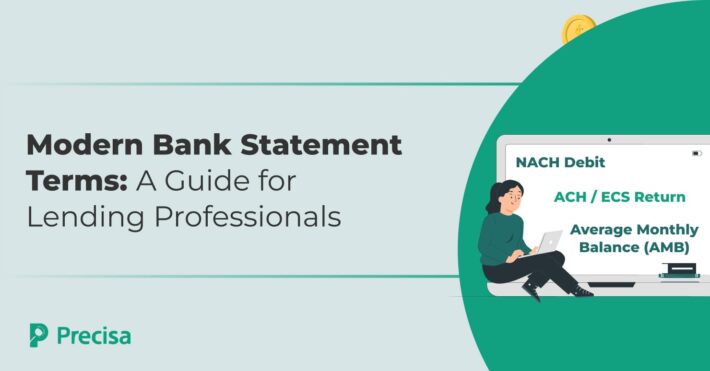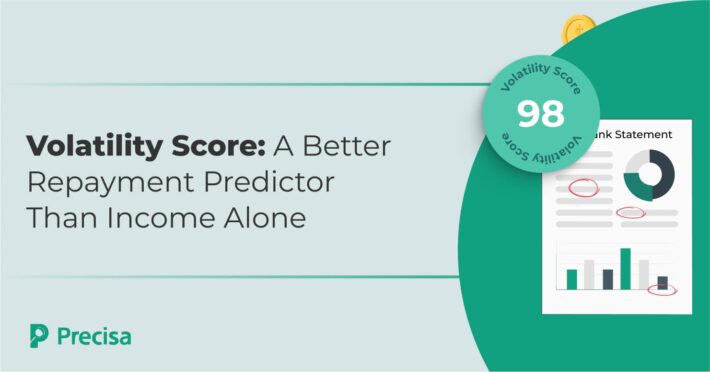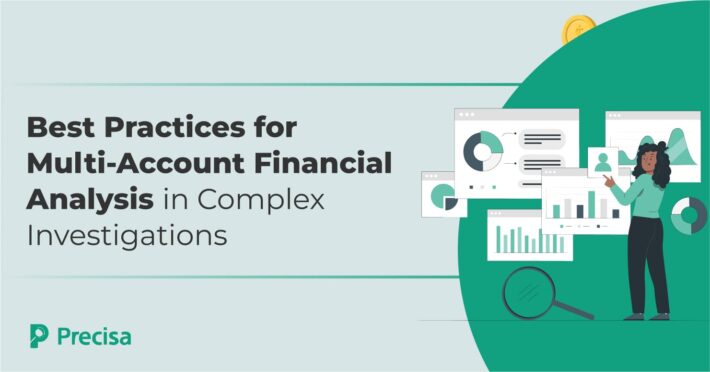Duration Gap Analysis for Digital Lenders: Understanding & Adapting to Customer Behavior
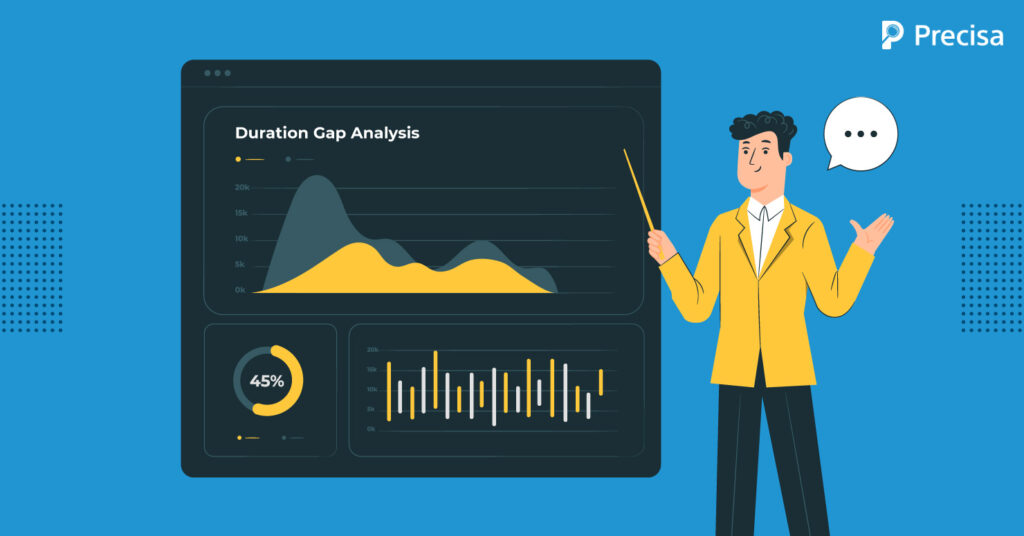
In fiscal year 2021, the non-performing assets of India’s public sector and private sector banks collectively amounted to INR 6.17 trillion and INR 2 trillion, respectively. The inability to predict risk when offering loans to business or retail customers results in the growth of non-performing assets. In turn, the growth of non-performing assets eats into the profitability of lending institutions. Digital tenders can learn extensively from these narratives emerging from the traditional banking ecosystem. One approach to predict risk better is to leverage duration gap analysis, a traditional metric businesses use to assess the gaps between cash inflows from assets and cash outflows from liabilities.
In this blog, we explain the duration gap analysis and how digital lenders can apply it to evaluate the risk factors associated with loan applicants. Also, we discover how this data can be used to adapt services and products to evolving customer behaviour with agility and accuracy.
What Is A Duration Gap Analysis?
The duration gap is a term used by financial institutions such as banks, pension funds, and others to help identify the level of risk associated with factors such as interest rate changes.
In the context of lending, the duration gap analysis is the in-depth analysis of a potential borrower’s previous repayment history.
For instance, patterns could be established between the time of loan origination and loan repayments made by the borrower for multiple past loans. This information is extremely valuable in evaluating the risk involved in financing borrowers.
Building capabilities to evaluate risk comprehensively can enable digital lenders to reduce the number and ticket size of non-performing assets. In turn, this has a domino effect on business profitability.
Applying Duration Gap Analysis: Adapting to Evolving Customer Behaviors
Digital lenders aspire to fill gaps that the traditional financial system has been unable to fill. Hence, it is important to understand and adapt to changing customer behaviour.
Here is a snapshot of key shifts that digital lenders must factor in:
Speed
Customers seek speedier loan approvals to fund their credit needs. Digital lenders need a system that enables them to process loan applicants quickly to avoid borrower drop-offs.
Digital solutions
More customers are shifting to the online mode to purchase financial products. Digital lenders that can digitise the process end-to-end can emerge with a competitive edge.
Broader data access
A large number of first-time borrowers have no credit history. Hence, digital lenders need to develop alternate data points that enable them to assess risk and rewards for underserved borrowers fairly.
Benefits of Evaluating Duration Gap Analysis
To keep pace with changing customer behaviours, digital lenders are adopting the use of Artificial Intelligence (AI)-driven tech-enabled duration gap analysis.
This approach comes with several advantages, such as:
1. Assessing risk accurately
A thorough duration gap analysis evaluates data from a host of borrower documents. These include income statements, bank statements, balance sheets, and Goods and Services Tax Returns (GSTR).
Red flags arising in statements can range from loan payment defaults, inaccuracy in company balance sheets, fraudulent documentation, and irregular financial patterns to bounced cheques, overdraft value and frequency, irregular cash withdrawal patterns, and low cash balances.
Smart usage of technology powers analysis that can spotlight a range of financial red flags within minutes. This process allows digital lenders to get a true picture of a borrower’s business’s fiscal health, thus enabling an accurate risk assessment.
2. Customised products and services
The insights from in-depth duration gap analysis can help digital lenders better understand customer behaviours, needs, and challenges.
Access to such a window of data analytics allows digital lenders to customise products and services based on customers’ real needs.
This is an opportunity to deliver higher value to borrowers, especially from the micro, small, and medium enterprises (MSMEs). This segment of borrowers may not benefit from the narrow specs of the existing loan structure.
Taking a dynamic approach to product innovation can help digital lenders build a competitive edge and stay relevant to unique customer needs.
3. Data-Driven Decision-Making
Digital lenders also need to make several decisions which may not be related to a borrower’s loan application.
Building a robust loan portfolio, understanding customer trends, identifying new markets, improving the customer’s user journey, expanding the business model, boosting customer retention, and upselling to existing customers, are areas where access to relevant data can make a significant difference.
A tech-enabled duration gap analysis process generates additional insights, which can assist the outcome of these business goals. Dashboards can be customised to analyse massive amounts of specific data in a matter of minutes.
4. Reduced Operational Costs
Access to superior duration gap analysis can help digital lenders be more strategic in multiple areas.
These include loan pricing, targeting the right audiences, and managing risk better. As fewer customers default on their loans, digital lenders will be able to reduce operational costs.
5. Increase in profitability
The ultimate aim of conducting a duration gap analysis is to increase the profitability of businesses.
By adopting this best practice, digital lenders can bring more efficiency, accuracy, and speed to their operations. These attributes can collectively help them drive revenues and profits.
Key Takeaway
Adapting to customer behaviour is an important ingredient in the growth story of digital lenders. Leveraging duration gap analysis can play a key role in this shift.
Using tech-enabled solutions such as Precisa can help digital lenders accurately and efficiently process the duration gap analysis for borrower businesses. This approach gives digital lenders an edge over traditional players in the banking ecosystem, which leaves many customers outside the framework.
Today, many businesses are turning to Presica’s comprehensive and seamless financial data analysis solution to simplify and speed up the process through automation.
The software provides actionable insights on a customisable dashboard, thus helping companies make informed business decisions.
Request a free demo today!

